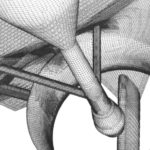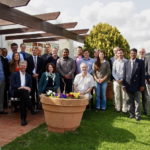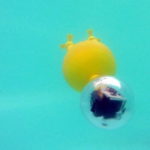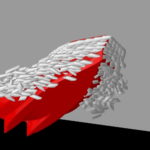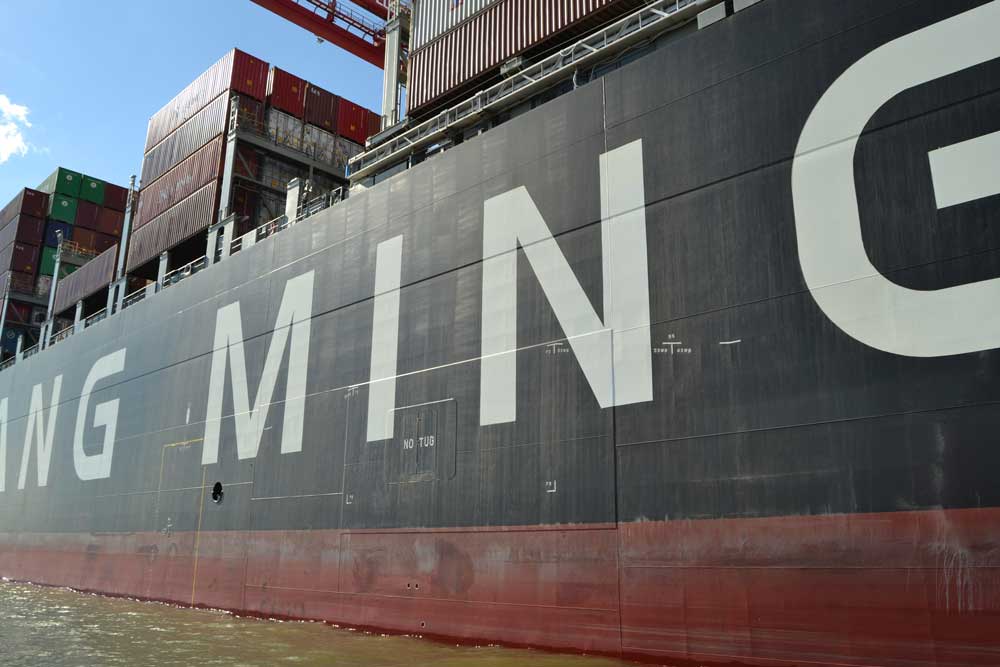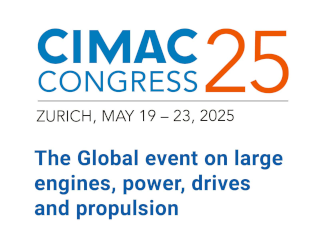Digitalisation, new challenges and knowledge are changing the maritime world.
Old recipes have started to wear out. The 11th Symposium on High-Performance Marine Vehicles, HIPER 2017, showed recipes of tomorrow
The technological development of the past 20 years, with global networks and being always connected has enabled a completely new[ds_preview] and mobile lifestyle. Smartphones are ten years old this year and have spread the awareness for digitalisation, big data and artificial intelligence throughout the world. We already have made significant progress in using the new potentials in many areas, also in shipping, HIPER 2017 showed. Nevertheless we are still at the beginning.
Last year the High-Performance Marine Vehicles Conference HIPER was held at a monastery in Italy, this year HIPER met in Zevenwacht, a picturesque winery near Cape Town, founded in 1800. Zevenwacht is located in Kuils River Valley, half way between Cape Town and Stellenbosch. With its vineyards it is situated along a row of hills with spectacular view of the surrounding mountains, of Cape Town and all the way to the Indian Ocean. Living on the rural premises, the attendees of the conference were rather isolated from city life. For three days Zevenwacht was like a private think tank. Karsten Hochkirch from DNV GL observed: »We live here like in a sanatorium, isolated from stress, well taken care of and free to think and contemplate.«
Naval architects and engineers, scientists and researchers from many countries around the world got together to discuss present accomplishments in digitalisation and potentials for shipping in the future. A number of delegates from South Africa also attended the meeting. Giampiero Soncini, Managing Director of Volaris Group and patron of HIPER for many years, observed: »The new normal is that yesterday’s recipes no longer work.« But HIPER shows that new recipes are already being created.
Democratisation of CFD
Opening speaker Thomas Hildebrandt of Numeca presented a paper on »The Democratisation of High Performance CFD«. While computational fluid dynamics, CFD, was the tool only of a few highly specialised hydro-dynamicists just a few year ago, high performance marine CFD is available to almost everybody today, making use of powerful cloud computing and the best and most intelligently adaptive CFD simulations available. Parallel hard- and software and self-learning mesh generation are part of this new development.
Hildebrandt is a proponent of adaptivity. His paper emphasises the importance of adaptation for maritime CFD applications. An example demonstrates that with only a moderate increase in mesh cell count, a substantial improvement in the quality of the results can be achieved by adaptivity. Adaptivity is also helpful in a business perspective. Hardware as well as software licenses are traditionally purchased in a static business model. The on-demand approach, however, offers a flexible and demand-driven way to allocate computational resources according to the task at hand. In combination, numerical and business adaptivity make it possible to fulfil the high requirements of full-featured maritime CFD at a fraction of the cost and time of the traditional approach.
The term »Numerical Towing Tank« has been used for several years now to denote the simulation of resistance and propulsion tests by CFD as an alternative to classical model basin tests. While rapid progress has been made in the numerical techniques, user-friendliness and ease of access is somewhat lagging. Karsten Hochkirch of DNV GL reports on progress, where commercial CFD solvers have become more user-friendly and pay-as-you-use schemes have reduced barriers for small and medium enterprises such as shipyards and design offices.
The idea of the »Virtual Trial« takes the development to the next level towards maritime digitalization. Hochkirch uses a central digitalization platform with a multitude of applications. Offering fully automated CFD simulations to evaluate the resistance and propulsion aspects of ships brings the various elements together, allowing »Virtual Trials« at any time, from anywhere and by anybody, as no CFD specific input is needed. In essence, ship designers or other interested parties can launch »Virtual Trials« in complete anonymity and with results within one week.
HIPER-organizer Volker Bertram looked at a practical field of application in Arctic shipping. Climate change will unlock the Arctic, leading to increased activity in ice-covered waters. This leads to an intensification of R&D work in simulation of ships in sea-ice. There are several different approaches to tackling this topic, from a semi-empirical and quantitative approach, to numerical simulation of ice breaking, simulation of brash ice flows and numerical ice-breaking simulation. A survey describes the most important literature with examples of results and concludes that simulation technologies for ships operating in ice are progressing from research to mature design tools.
In »A CAVE-Man’s View of Ship Design«, Volker Bertram reviews a perspective on modern ship design looking at four key tasks collected under the acronym CAVE: Creating design alternatives, Analysing them, Visualising options and results, and deriving Enlightenment from design exploration. None of these aspects should be seen alone. Only in proper combination is the full potential for advanced CAVE designs mobilised. This trend will continue: simulation tools with Virtual Reality displays, expert systems with simulation tools, simulation-based virtual experience for training neural networks, and more will be seen in the future. Stand-alone techniques have reached a high degree of maturity. Further progress is best obtained by combining and aligning the different techniques. This often requires interdisciplinary cooperation. Innovative funding frameworks and modern communication possibilities enable sourcing of best partners worldwide for a given problem.
Herbert Kohlmann from SARC reflects on what we may expect from Computer-Aided Ship Design by 2030. He describes changes in the future model of the ship design method, away from the present design spiral, followed by several CAD-related topics, such as progress in virtual and tactile modelling methods of the hull, tools for data representation and processing and finally the organisation of today’s rather heterogeneous software components into one virtual CAD system. Finally he envisions scenarios on the use and advancement in computer science and technology and the impact on CASD.
In an outlook he warns about possible fragmentation or a standstill era in ship design, but he ends with a positive view of a bright young world: Here the focus lies not on computer programs but on advancements in methodology, which will assist the designer in his daily work and make the industry more pleasant. The results will become available as computer applications, no doubt, but more attention will be placed on user-friendliness.
Digital Twin and Big Data
We collect an enormous amount of data today. How can we best use what is termed »Big Data«? Marketing is one branch, where completely new opportunities arise from the collection of data about customer preferences. In fact, everyone using the internet and is doing online business is being evaluated and behavioural data is collected.
In the technical arena, like in the aero-industry, in shipping or offshore technology, digitalisation brings an unlimited amount of data from measurements and monitoring. The value of these data collections depends on their evaluation and analysis. Several different strategies are proposed for the evaluation of Big Data.
Annie Becker from Stellenbosch University describes in »From Big Data to Insight« the management of extensive experimental data gathered during an expedition of the polar supply and research vessel »SA Agulhas II«. High quality recordings of environmental conditions and related ship response present an opportunity to improve the design of polar vessels. On-line use of these data is proposed to be used to support decision making on board.
Stein Ove Erikstad, from NTNU, Trondheim, describes an evaluation procedure of Big Data using next-generation digital twins capable of rendering the state and behaviour of a real asset in real time. A physics-based digital twin solution is compared with artificial intelligence and machine learning. The proposition is that while the two are fundamentally different in how knowledge and insight is generated, they at the same time offer opportunities for innovative complementary solutions based on big data sensor platforms.
The value of an accurate Digital Twin for a highly complex asset includes diligent planning of inspections and maintenance, early damage detection, access to time series for design feedback, virtual inspection support, prediction of consequences of changed operating condition, synchronisation of multi-plant installation, visualisation of stresses at inaccessible locations. The model is self-learning and can be updated or update itself from the Big Data accumulated and fed back into the DT. Therefore also adaptive control strategies and improved predictive maintenance tactics based on the actual physical condition of the system are possible.
Christian Cabos of DNV GL presented new approaches to future hull surveying that also use the DT and Virtual Reality (see HANSA 09/2017). A key aspect of hull surveys for ships in service today lies in the extensive on-board activities of class surveyors. Time efficiency of the hull survey itself is normally low on account of difficult access conditions. It is therefore attractive to consider replacing human entry, at least partially at first, through alternative techniques, such as access to structure provided by an autonomous vehicle, such as a drone or a diving or crawling robot. The orientation of the drone is enabled through automatic indoor positioning technology. Image capturing methods allow taking photos or hyperspectral images. Through an image mapping algorithm, captured photos can be displayed on the model, thereby building an updated Digital Twin.
Autonomous Shipping
When hearing a lecture about advanced topics in future shipping from a high level administrator, we rather expect to hear why some new ideas will not work. But Stein David Medhaug from the Norwegian Maritime Directorate is very supportive of the idea that digitalisation, all the way to autonomous and remote shipping can lead to improvements in ship safety and sustainability. His believe is, if we do it right, automation and autonomous operation may lead to safer shipping in the future. In Norway, the maritime authority encourages the industry by stimulating innovative thinking, by striving to be open-minded, by facilitating ideas which seem to be sustainable and inviting the industry to participate in the Authority’s international work. Their development concept includes: e-navigation, digitalisation, automation and autonomous ships.
New materials at sea
HIPER is not all about Big Data, simulation and design software. At this conference the hardware, new materials and technologies have their place. As composite materials evolve, they should be considered not only in the high-speed, military and leisure markets but also for commercial shipping. The price of composites, a lack of standardisation and fire safety issues have in the past been obstacles to the widespread use of composites for ships. Jonathan Evans from STRUCTeam points out, that as the maritime world gets more progressive and governing bodies have an explicit role to facilitate innovations, including composites for ship structural components is just around the corner.
The challenge for the maritime industry is to understand how to design and work with composites without the need to be an expert. Relevant software, which adopts multiple design guidelines, is available and aids the designers in the transition to use more composite components for commercial ships in the future.
Along with the many advances in ship design and operation discussed and expected for the future, antifouling remains a problem area between ship efficiency and environmental concerns and limitations. Volker Bertram describes the evolution of antifouling efforts and looks at new possibilities for the future. Currently popular self-polishing copolymers are described which are mainly based on copper-compounds and other biocides (boosters). Regulations are getting stricter. Engineers, however, have always found viable solutions to cope with fouling. Super-hydrophilic coatings, nano-coatings, surface treated coatings combined with robotic cleaning, flocked surfaces, and ultra-sound transducers are alternatives that have started to emerge.
Jan Kelling’s paper Ultrasonic Technology for Biocide-Free Antifouling received the HANSA Maritime Innovator Award at HIPER 2017 for his successful HASYTEC-procedure to prevent fouling by ultrasound excitation of the exposed surface at specific frequencies (see HANSA 10/2017). This low-energy method is very effective and environmentally sound; it is expected to be the new solution to antifouling in shipping. The HANSA Inspiring Visionary Award this year went to Kihei Matsuo for his presentation Innovative Technologies for Maritime Industry and Future Scenario. This paper will be reprinted in HANSA separately.
Learning in the new world
As our world gets more complex continuously, training, adult education, and e-learning become increasingly important. Tracy Plowman of DNV-GL discusses expected and desirable changes in teaching engineering, in particular post- graduate and professional training in maritime technologies. A different teaching infrastructure with possibly different providers is expected to evolve. Market and technology aspects are analysed, highlighting challenges and pitfalls of new technologies commonly referred to as »e-learning«. A pedagogy-driven education is preferred to a more technology-driven method.
HIPER 2017 has again promoted a valuable dialogue between technology leaders in the maritime industries as well as related fields, building bridges between academia, research establishments and industry. The presentations and discussions were all at high level and very open. Nobody seemed to hold back good ideas. Excellent wines in the evening may have contributed to a very special atmosphere.
Hans Payer







